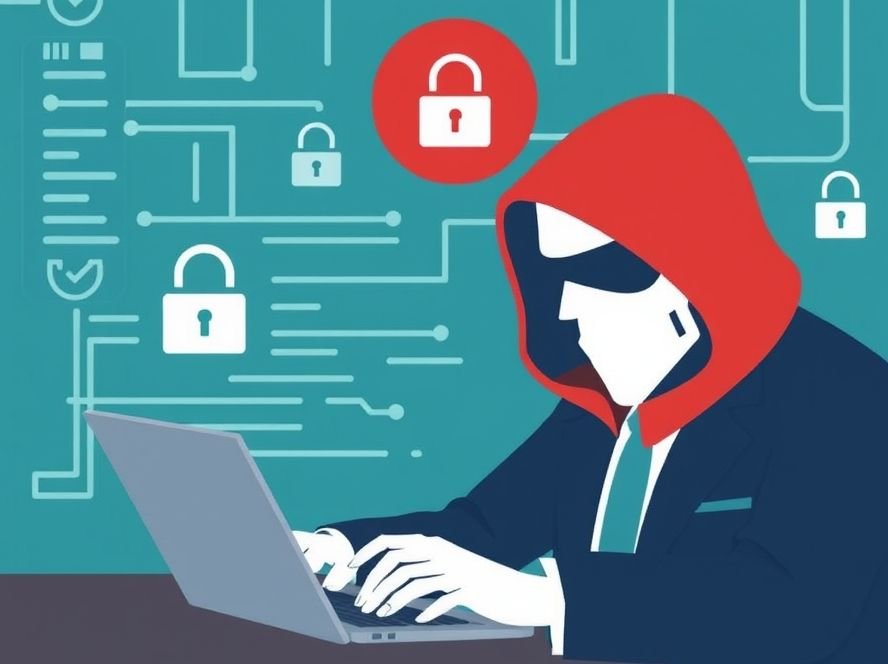“We Have Antivirus!” — And 4 Other Dangerous Myths Putting Your Business at Risk

“We Have Antivirus!” — And 4 Other Dangerous Myths Putting Your Business at Risk
You’re not getting hacked because you lack fancy tools.
You’re getting hacked because you’re making the same dumb mistakes everyone else is.
And guess what?
Hackers know it.
They’re not cracking military-grade encryption.
They’re logging in with stolen passwords.
Clicking phishing links you didn’t train your team to spot.
Exploiting that one server you “forgot” to patch last month.
The numbers don’t lie:
→ $11 million lost to cybercrime… every. single. minute.
→ 60% of small businesses close within 6 months of a breach
→ 95% of breaches? Caused by human error.
This isn’t about “if.”
It’s about “when.”
And if you’re still doing any of these 5 things?
You’re basically rolling out the red carpet for hackers.
❌ Mistake #1: “MFA? Nah, We’re Good.”
You’ve got passwords. You’ve got antivirus. You’re “secure,” right?
Wrong.
Credential theft is now the #1 cause of data breaches.
Not zero-days. Not nation-state hackers.
Just someone guessing — or buying — your team’s passwords.
And if you’re not using Multi-Factor Authentication (MFA) on everything — email, cloud apps, VPN, admin panels — you’re playing Russian roulette with your business.
💡 Fix it today:
→ Turn on MFA for every account that supports it (yes, even “internal” ones)
→ Use authenticator apps — not SMS (SIM swapping is real)
→ Make it mandatory. No exceptions. Not even for the CEO.
Fun fact: MFA blocks 99.9% of automated attacks.
That’s not marketing. That’s Microsoft’s data.
❌ Mistake #2: Letting “Shadow IT” Run Wild
Your marketing team signed up for a “free” file-sharing app.
Your accountant uses their personal Dropbox for client tax files.
Your sales rep logs into a random CRM they found on Product Hunt.
You didn’t approve it. You didn’t secure it. You probably don’t even know it exists.
That’s Shadow IT — and it’s a silent killer.
🚨 Why it’s dangerous:
→ Data lives outside your backup strategy (poof — gone when they quit)
→ No compliance controls (hello, GDPR fines)
→ Zero visibility (you can’t secure what you don’t know exists)
💡 Fix it today:
→ Create a simple, clear “Approved Apps” list — and share it company-wide
→ Use tools like Microsoft Defender for Cloud Apps to auto-detect shadow usage
→ Don’t punish — educate. People use shadow apps because they’re trying to get work done. Give them better, secure alternatives.
❌ Mistake #3: “We Have Antivirus — We’re Covered!”
If your entire security strategy is “we installed antivirus last year,”
…you might as well hang a “Hack Me” sign on your firewall.
Modern threats don’t need malware files.
They use:
→ Phishing links (not attachments)
→ Living-off-the-land attacks (using legit Windows tools)
→ Credential stuffing (your reused password from LinkedIn)
Your old-school antivirus?
It won’t touch any of that.
💡 Fix it today — build a real security stack:
→ Next-gen endpoint protection (think: CrowdStrike, SentinelOne)
→ Email filtering that scans links + impersonation attempts
→ DNS filtering (block malicious sites before they load)
→ Cloud security posture management (CSPM) for AWS/Azure/M365
→ Automated patch management (no more “we’ll do it next week”)
Layered defense isn’t optional. It’s survival.
❌ Mistake #4: Ignoring Your Devices (Especially Remote Ones)
Your team works from coffee shops. From home. From airports.
Their laptops? Their phones? Their tablets?
If you’re not managing them — you’re not securing them.
Unpatched devices. Lost phones with company data. Personal apps syncing sensitive files.
This isn’t hypothetical. It’s happening right now.
💡 Fix it today:
→ Deploy a Mobile Device Management (MDM) or Endpoint Management solution (Microsoft Intune, Jamf, etc.)
→ Enforce encryption, passcodes, and remote wipe capabilities
→ Segment access — not every device should see your financial server
→ Require VPN + MFA for all remote connections
Your data doesn’t care if an employee is at their desk or on a beach.
Protect it everywhere.
❌ Mistake #5: “We Trained Them… Once.”
You did a 30-minute cybersecurity PowerPoint during onboarding in 2022.
Check the box. Done.
…And then wondered why someone clicked a phishing link titled “URGENT: HR PAYROLL UPDATE!!!”
95% of breaches start with human error.
And humans forget. Humans get busy. Humans trust.
💡 Fix it today — make security part of your culture:
→ Monthly 5-minute security micro-trainings (video, quiz, real examples)
→ Simulated phishing tests — with rewards for reporting, not punishment for failing
→ Security tips in newsletters, Slack channels, even bathroom posters
→ “Security Champion” program — empower one person per team to lead by example
Training isn’t an event. It’s a habit.
🛡️ Bottom Line: Stop Waiting for a Breach to Wake You Up
You don’t need a million-dollar security team.
You don’t need to be a tech genius.
You just need to stop making these 5 painfully common mistakes.
→ Turn on MFA
→ Kill Shadow IT
→ Ditch “antivirus-only” thinking
→ Manage every device
→ Train your team — constantly
Start with one. Fix it this week.
Then move to the next.
Because hackers aren’t waiting.
And the cost of “later” is bankruptcy.
🤝 Need a Reality Check?
Don’t guess your way through security.
👉 Book a free 15-minute “Cybersecurity Health Check” with us.






